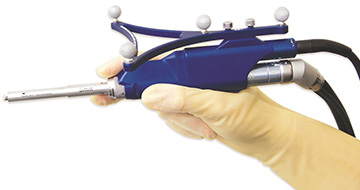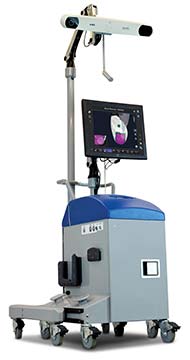Find an Orthopedic Specialist
A Common Cause of Knee and Hip Pain and How to Treat It
Oh for the days of yore, when the words ‘joint’ and ‘pain’ weren’t used together in your vocabulary. As time passes though, your joints lose their get-up-and-go, and simple movements – especially in your knees and hips – become painful. One of the most common conditions that causes both hip pain and knee pain is osteoarthritis (OA), a form of degenerative joint pain caused by wear and tear on your joints.
As you age, the cartilage that cushions your joints starts to wear down, causing the bones to rub together. The bone-on-bone action leads to inflammation of the joints. OA most commonly affects the joints in your arms and legs, including your fingers, wrists, knees, ankles, and hips and even your lower back.
At the outset of OA, the cartilage between your joints becomes worn and torn as well as inflamed. The wear-and-tear process leads to loss of water in the joint, causing the cartilage to harden, which makes moving the surrounding joint more difficult.
As the loss of cartilage is a slow process, some people have early OA symptoms for years before the disease progresses.
Early Symptoms of Osteoarthritis
- Pain - Aching back, neck, knees, and hips.
- Tenderness – Discomfort when pressing down on the joint or visible swelling of the joint
- Joint stiffness – Stiffness first thing in the morning or after sitting for a long period of time. Often people feel better after gentle exercise or going about their daily routine,
- Abnormal sensations – When cartilage, basically a shock absorber to help your joints move smoothly, wears down the bone-to-bone rubbing that occurs can cause abnormal sensations, or you can hear your bones cracking and clicking as they rub against each other.
- Loss of range of motion – Moving the affected areas of the body, such as fully bending and extending your leg, is not as easy as it once was
Basic At-Home Treatments for Hip and Knee Pain
- Cold and heat. Treating pain with heat and cold may help. Wrap an ice pack or a bag of frozen vegetables in a towel to ice your knee or hip. A warm bath or shower may also help reduce your pain and prepare your muscles for stretching.
- Over-the-counter pain relievers. Some pain-relieving medications like acetaminophen (Tylenol), ibuprofen (Advil, Motrin IB), and naproxen sodium (Aleve) can help reduce inflammation that might be causing your pain.
- Movement/stretching. Gentle strengthening and stretching exercises – such as yoga and water-based movements like water-aerobics, can help relieve pain and stiffness.
- Rest. Avoid doing things that require you to bend at or put a lot pressure on the hip or knee.
- Weight loss. Losing weight can reduce stress on your joints.
Can Osteoarthritis Be Prevented?
Although OA is not an inevitable part of the aging process, the condition is a result of a combination of factors, many of which can be modified or prevented. Doctor recommendations to reduce the risk of OA or delay its onset include:
- Maintaining a healthy weight. Extra weight puts added pressure on weight-bearing joints, such as the hips and knees. In addition, fat produces cytokines, destructive proteins that stimulate inflammation throughout the body, alter cartilage cells and destroy joint tissue. In short, if you are overweight, losing just a few pounds can reduce stress and inflammation.
- Controlling your blood sugar. High blood sugar (glucose) levels can cause cartilage to harden more quickly, while diabetes can trigger inflammation that leads to cartilage loss.
- Staying active. Keep joints healthy from the get-go. Even just 30 minutes of moderately intense exercise five times a week strengthens the muscles that support and stabilize your hips and knees and helps joints stay limber.
- Protecting your joints. Of course, injuries can’t be completely avoided, but be careful when lifting heavy objects, and take breaks when you are doing something that puts stress on your hips or knees.
- Keeping a healthy lifestyle. The best defense is offense. Sleep, healthy diet, exercise and stress management all can contribute to keeping your joints healthy.
Although OA is a common cause of hip and knee pain, there are many different conditions or injuries that could be creating your pain. It is important to have your hips and knees evaluated by a doctor to determine the cause and recommend a plan moving forward to ease your pain.
Sources:
Arthritis Association
Healthline



